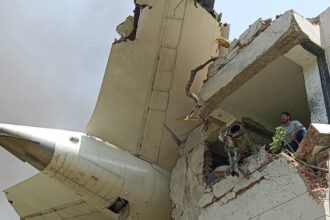DGCA orders fuel switch inspections on Indian Boeing 787 and 737 fleets following Air India Dreamliner crash.
India’s aviation regulator, the Directorate General of Civil Aviation (DGCA), has directed all domestic carriers operating Boeing 787 and 737 aircraft to inspect the fuel control switch locking mechanism by 21 July 2025. The order follows findings from a preliminary investigation into the Air India Flight AI171 crash, which revealed that fuel supply to both engines was cut off just moments before the fatal accident.
The DGCA noted that several international and Indian operators have already begun inspecting their aircraft in response to guidance from the U.S. Federal Aviation Administration (FAA). Now, Indian carriers including Air India, Air India Express, Akasa Air, and SpiceJet have been formally instructed to perform checks and submit compliance reports to the DGCA and their respective regional offices.
The fuel control switches—housed within the Throttle Control Module (TCM)—are vital for regulating fuel flow to the engines. Any unintended disengagement could lead to catastrophic consequences, as seen in last month’s crash.
Flight AI171, operated by a Boeing 787-8 registered VT-ANB, crashed shortly after takeoff from Ahmedabad en route to London Gatwick on 12 June, killing all 260 people on board.
The Aircraft Accident Investigation Bureau (AAIB) released its preliminary findings over the weekend, revealing that both fuel control switches were found in the OFF position, nearly simultaneously.
Cockpit voice recordings captured one pilot asking the other, “Did you shut the fuel?”—to which both reportedly denied taking any action.
The FAA had previously flagged the potential for accidental disengagement of the locking system in certain Boeing 787 and 737 models via a Special Airworthiness Information Bulletin (SAIB) issued in 2018. However, the issue was not classified as a safety risk, and no mandatory airworthiness directive was issued at the time.











